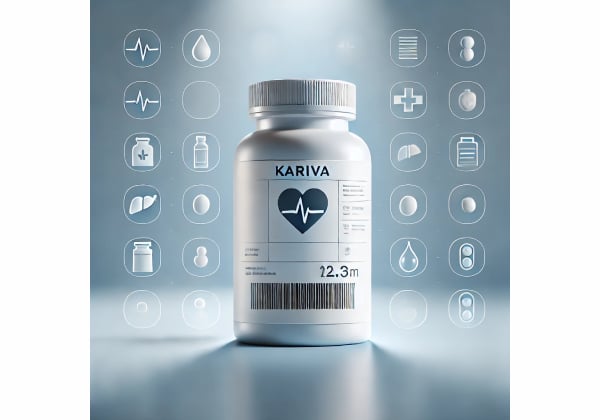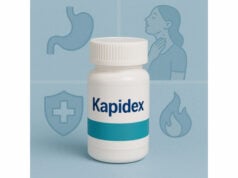
Kariva is a low-dose combined oral contraceptive (COC) that blends two hormones—desogestrel (a progestin) and ethinyl estradiol (an estrogen)—into a 28-day pack designed to prevent pregnancy when taken consistently. Many people choose Kariva for its predictable cycles, lightweight estrogen exposure, and a pack layout that includes five very low-dose estrogen tablets at the end of the cycle. Beyond reliable contraception, users may notice steadier bleeding patterns and less period pain over time. Like all estrogen-containing methods, Kariva is not for everyone: smoking after age 35, migraine with aura, certain clotting risks, and some liver conditions make combined pills unsafe. This guide translates the fine print into practical, step-by-step advice—how Kariva works, who benefits most, how to start, what to do if you miss a pill, and which side effects deserve attention. If you are comparing pills, switching methods, or returning after a break, you will find clear, actionable instructions here to help you decide whether Kariva fits your goals and health profile.
Quick Overview
- Prevents pregnancy by stopping ovulation and thickening cervical mucus; often stabilizes monthly bleeding.
- Typical daily dose: 1 tablet; pack contains 21 tablets with desogestrel 0.15 mg + ethinyl estradiol 0.02 mg, 2 inert tablets, then 5 tablets with ethinyl estradiol 0.01 mg.
- Use backup for 7 days when starting late or after certain missed-pill scenarios; vomiting or severe diarrhea can reduce protection.
- Avoid if you are over 35 and smoke, have migraine with aura, a history of clots, certain liver disease, or current breast cancer.
Table of Contents
- What is Kariva and how it works
- Who benefits most from Kariva
- How to start and take Kariva
- Missed pills, interactions, and troubleshooting
- Safety, risks, and who should avoid
- Evidence and practical FAQs
What is Kariva and how it works
Kariva is a prescription combined oral contraceptive (COC). Each 28-day blister contains three types of tablets taken in sequence:
- 21 white active tablets: desogestrel 0.15 mg + ethinyl estradiol 0.02 mg.
- 2 light-green tablets: inert (no hormones).
- 5 light-blue tablets: ethinyl estradiol 0.01 mg.
This “21/2/5” layout is sometimes called an “extended estrogen” tail. The five very low-dose estrogen tablets at the end can blunt the abrupt hormone drop that occurs with traditional 7-day hormone-free intervals. Many users find this design reduces withdrawal symptoms such as headaches or mood dips and helps keep bleeding light and predictable.
Primary mechanisms of action
- Inhibits ovulation. Desogestrel and ethinyl estradiol suppress the luteinizing hormone (LH) surge, so the ovary does not release an egg.
- Thickens cervical mucus. Sperm movement is slowed and blocked.
- Alters endometrium. The uterine lining becomes less receptive to implantation.
When taken daily at roughly the same time, Kariva is highly effective. With perfect use, COCs are above 99% effective; with typical use across a year, effectiveness is lower because of missed or delayed pills. Timers or phone reminders help keep protection high.
Non-contraceptive advantages people often seek
- More regular cycles: predictable bleeds during the end-of-pack tablets.
- Less cramping and lighter flow: many users report fewer painful days and less menstrual blood loss over several cycles.
- Cycle control: the layout is friendly to travel or event planning; after several cycles, you and your prescriber can discuss continuous use strategies if needed.
Key limitations
Kariva does not protect against HIV or other sexually transmitted infections. Condoms remain important for STI protection. Also, as with any estrogen-containing pill, specific medical conditions (e.g., certain clotting disorders, migraine with aura) are strong reasons to choose a non-estrogen method instead.
Who benefits most from Kariva
Kariva suits people who want a dependable, familiar pill with a gentler estrogen taper at the end of the cycle. It is a good match if you value:
- Predictability: steady cycles with a regular, short withdrawal bleed.
- Lower daily estrogen dose: 20 mcg during the active phase, then 10 mcg pills during the final five days.
- Simple routine: one pill every day, taken at about the same time.
Situations where Kariva may be a particularly thoughtful choice
- You experience estrogen-withdrawal symptoms (e.g., headaches, mood changes) on pills with a 7-day hormone-free week. The five 0.01 mg ethinyl estradiol tablets can soften that drop.
- You want lighter periods over time. Many combined pills decrease menstrual blood loss across several cycles and can improve iron balance for people prone to deficiency.
- You prefer a traditional monthly cycle versus an extended or continuous regimen but still want milder end-of-cycle symptoms.
When a different method might fit better
- Migraine with aura or major clotting risk. Estrogen-containing pills increase the risk of stroke or venous thromboembolism (VTE) in these settings. Progestin-only methods (POP, implant, IUD) or non-hormonal options are safer.
- Smoking after age 35. Combining cigarettes and estrogen substantially raises the risk of serious cardiovascular events; avoid COCs in this group.
- Early postpartum and breastfeeding. Estrogen can modestly reduce milk supply in the early weeks; your clinician can suggest a lactation-friendly plan and the safest time to transition.
- Certain liver diseases or current breast cancer. Estrogen-containing pills are contraindicated.
Alternatives to consider
- Progestin-only pills (POPs): better for migraine with aura or higher VTE risk, but must be timed more strictly.
- Long-acting reversible contraception: levonorgestrel IUDs, copper IUD, or the etonogestrel implant eliminate daily adherence.
- Other COCs with different progestins or schedules: if acne, mood, or breakthrough bleeding are issues, a tailored formulation or a 24/4 schedule may help.
Choosing a contraceptive is about fit—your health conditions, medications, cycle preferences, and tolerance for side effects. A brief review of your history (including headaches, blood pressure, and smoking status) will quickly narrow the safest options.
How to start and take Kariva
What’s in the pack
- Days 1–21: white tablets (desogestrel 0.15 mg + ethinyl estradiol 0.02 mg).
- Days 22–23: light-green inert tablets.
- Days 24–28: light-blue tablets (ethinyl estradiol 0.01 mg).
Starting methods
- Day-1 start: Take the first white tablet on the first day of your period. Contraception is immediate; no backup needed.
- Sunday start: Take the first white tablet on the first Sunday after bleeding begins (or on Sunday if bleeding starts that day). Use backup (condoms) for the first 7 days.
- Quick start (today): If reasonably sure you are not pregnant, take the first white tablet today—use backup for 7 days.
Switching from another method
- From a different combined pill: Start Kariva the day after your last active pill of the old pack—do not leave a gap; backup is usually not needed.
- From the ring or patch: Start the day the device would have been due; use 7 days of backup if you are late.
- From progestin-only methods:
- POP: start Kariva the next day after your last progestin-only pill; use backup for 7 days.
- Implant or IUD: start on removal day and use 7 days of backup.
- Depot medroxyprogesterone (DMPA) shot: start anytime up to the next due shot and use 7 days of backup.
Daily routine tips
- Take your pill at the same time each day—set an alarm or pair with a daily habit.
- If you forget whether you took a pill, check your pack and today’s tablet color/position.
- Bleeding patterns usually settle by the third pack. Sporadic light spotting can happen early on; keep taking pills on schedule.
Travel and time-zone changes
- Bring an extra full pack.
- Aim to keep doses within a 24-hour window of your usual time; if needed, shift by 1–2 hours per day over several days.
- Store tablets in a cool, dry place; avoid hot cars or bathrooms with steam.
When to use condoms even if you take the pill
- Any time you have a new partner or want STI protection.
- During the first 7 days after certain missed-pill scenarios (see next section).
- If you have vomiting or severe diarrhea within a few hours of a dose (this can impair absorption).
Missed pills, interactions, and troubleshooting
If you are late or miss active white tablets (Days 1–21)
- One pill late (<24 hours) or missed (24–<48 hours): Take the missed pill as soon as you remember and take the next pill at your regular time (this may mean two pills in one day). No backup needed.
- Two or more missed (≥48 hours) in Week 1 or 2: Take two pills today and two tomorrow, then continue one daily. Use backup for 7 days. If you had sex in the past 5 days, consider emergency contraception.
- Two or more missed in Week 3: Finish by taking one pill now and one at the regular time, then skip the 2 inert and 5 blue tablets and start a new pack the next day. Use backup for 7 days.
If you miss the end-of-pack tablets
- Inert light-green (Days 22–23): Throw away the missed tablet(s); continue the schedule. No backup needed.
- Light-blue 0.01 mg ethinyl estradiol tablets (Days 24–28): If missed, throw away and continue one per day until the pack is empty. No backup needed.
If you vomit or have severe diarrhea
- Within ~3–4 hours of a white or blue tablet: take another active pill as soon as you can keep it down; if illness continues >24 hours, treat it like missed pills and use backup until you have 7 consecutive days of absorbed active pills.
Drugs and supplements that can reduce pill effectiveness
- Rifampin or rifabutin (TB antibiotics): strong enzyme inducers—always use backup; many choose a non-estrogen method during therapy.
- Certain anti-seizure medicines (e.g., carbamazepine, phenytoin, topiramate at higher doses, barbiturates): can lower hormone levels—discuss alternatives or add a barrier method.
- Some antiretrovirals and St. John’s wort may also interact.
- Most common antibiotics (penicillins, cephalosporins, macrolides) do not meaningfully reduce COC efficacy, but gastrointestinal upset can—use judgment and backup if you are ill.
Common side effects and simple fixes
- Nausea: take with food or at bedtime; usually fades after 1–3 cycles.
- Breast tenderness: supportive bra; improves over time.
- Breakthrough spotting: stay on schedule; avoid smoking; if persistent beyond three cycles, check for missed pills, interactions, or consider a different formulation.
- Headaches around the end of the pack: the five light-blue estrogen tablets often help. Track triggers; report new severe headaches.
When to seek care urgently
- ACHES mnemonic: Abdominal pain (severe), Chest pain or shortness of breath, Headaches (sudden/severe, neurologic symptoms), Eye problems (vision loss/blur), Severe leg pain or swelling. These can signal clotting or other serious issues.
Safety, risks, and who should avoid
All combined pills carry estrogen-related warnings. Knowing them helps you decide confidently.
Do not use Kariva if any of the following apply
- You smoke and are 35 or older. Cigarette smoking plus estrogen raises the risk of heart attack and stroke.
- History of blood clots, clotting disorders, or major surgery with prolonged immobility.
- Migraine with aura (any age) or any migraine if age ≥35.
- Certain liver conditions (active hepatitis, severe cirrhosis, hepatic tumors).
- Current or past breast cancer or other estrogen-sensitive cancers.
- Uncontrolled hypertension or diabetes with vascular complications.
- Known pregnancy.
Important cautions
- High blood pressure: Combined pills can raise BP slightly; regular monitoring is advised.
- Gallbladder disease: Estrogen can worsen existing disease; watch for upper right abdominal pain, fever, or jaundice.
- Lipid and glucose effects: Usually mild with low-dose formulations, but those with complex diabetes or marked dyslipidemia need individualized assessment.
VTE and stroke: putting numbers in context
Clot risk with COCs is higher than not using hormones but far lower than during pregnancy or postpartum. The absolute risk for a healthy, nonsmoking user is still low. Risk rises with personal or family history of clots, immobilization, smoking, and migraine with aura. If you have any of these, a progestin-only or non-hormonal method is safer.
Cancer considerations
Long-term COC use is associated with lower risks of endometrial and ovarian cancers; effects on breast and cervical cancer risk are complex and depend on duration and personal risk factors. If you have a personal history of breast cancer, avoid COCs.
Fertility and return to baseline
After stopping Kariva, ovulation usually returns within a few weeks. Cycles may be irregular at first if they were irregular before using the pill.
Breastfeeding and postpartum timing
In the first weeks postpartum—especially if breastfeeding—estrogen-containing pills are typically deferred due to clot risk and potential effects on milk supply. Your clinician can advise when a transition to Kariva becomes appropriate based on your risk profile and feeding goals.
Evidence and practical FAQs
Why does Kariva include five low-dose estrogen pills?
The five 0.01 mg ethinyl estradiol tablets create a softer landing between cycles. That small estrogen trickle often lowers estrogen-withdrawal headaches and stabilizes bleeding compared with a full week off hormones. People who are sensitive to abrupt hormonal shifts often prefer this schedule.
Can I use Kariva continuously to skip periods?
The pack is built for monthly cycling, but many clinicians guide interested users to skip the inert and blue tablets and start a new pack. Expect some unscheduled spotting early on; it typically improves after a few cycles. Continuous strategies should be individualized.
How effective is Kariva in real life?
With perfect use, all COCs are above 99% effective. With typical use (occasional late or missed pills), effectiveness is lower. Reliability improves with adherence aids (alarms, apps, keeping a spare pack) and by avoiding known interactions.
Does Kariva help acne or PMS?
Some users see clearer skin and steadier moods on combined pills due to ovulation suppression and less hormonal fluctuation. Individual responses vary. If acne is your main goal, your prescriber may favor a formulation with specific anti-androgenic properties; Kariva can still help, but it is not targeted therapy.
What if I have breakthrough bleeding?
The most common causes are missed pills, starting or stopping interacting medications, smoking, or the early adjustment period. Track your doses, avoid cigarettes, and give it three full cycles unless bleeding is heavy or prolonged. If persistent, a different estrogen dose or progestin may suit you better.
Do antibiotics cancel the pill?
Only a few enzyme-inducing antibiotics (notably rifampin and rifabutin) reliably reduce COC levels. Most routine antibiotics do not. However, if an antibiotic causes vomiting or severe diarrhea, absorption suffers—use condoms and follow missed-pill guidance.
Who should choose a different method from the start?
Anyone over 35 who smokes, people with migraine with aura, a history of clots, certain liver disease, current breast cancer, or complicated diabetes should avoid estrogen-containing pills and choose safer alternatives such as progestin-only or non-hormonal methods.
Bottom line
Kariva’s strength is cycle control with a gentle estrogen taper. If you are a nonsmoker under 35 without aura migraines or clotting risks and you want a predictable monthly schedule, Kariva offers a well-understood option—with clear steps to stay protected if life gets messy.
References
- DailyMed – KARIVA- desogestrel/ethinyl estradiol and ethinyl estradiol kit 2024 (Label)
- U.S. Medical Eligibility Criteria for Contraceptive Use, 2024 | Contraception | CDC 2024 (Guideline)
- Labeling for Combined Hormonal Contraceptives Guidance for Industry 2017 (Guidance)
- KARIVA- desogestrel/ethinyl estradiol and ethinyl estradiol kit 2023 (Label – regimen and tablet strengths)
- Appendix D: Classifications for Combined Hormonal Contraceptives 2024 (Guideline)
Disclaimer
This guide provides general educational information about Kariva and combined oral contraceptives. It is not a substitute for personal medical advice, diagnosis, or treatment. Only your clinician can assess your health history, medications, and risks to recommend the safest contraceptive method for you. If you have sudden chest pain, severe headache, vision loss, leg swelling, shortness of breath, or severe abdominal pain while using a combined pill, seek emergency care.
If you found this article useful, consider sharing it with a friend or on Facebook, X, or your favorite platform. Your support helps us keep producing clear, trustworthy health content. Thank you.










